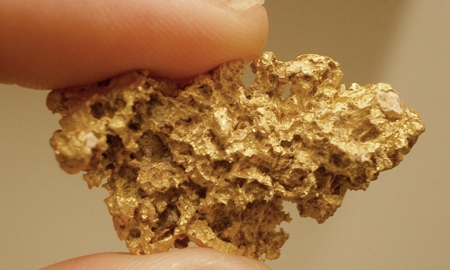
Ghana is endowed with substantial mineral deposits, as evinced by the country’s former name, the Gold Coast. Estimates put its mineral reserves at: 2 billion ounces of gold; around 100 million karats of diamonds, ranking Ghana fourth in the world; 400 million tonnes of bauxite; and 49 million tonnes of manganese, the third largest in the world. In addition, the country is rich in limestone, iron mineral, quartz sand, and kaolin. Knowledge of Ghana’s mineral wealth is constantly increasing thanks to the Mining Sector Support Programme (MSSP), which is being implemented with financial and technical assistance from the EU.
The country now has 23 large-scale mining companies producing gold, diamonds, bauxite and manganese. In addition, there are more than 300 registered small-scale mining groups and 90 support service companies. Investment inflows into Ghana’s gold production, exploration and support services reached $770 million in 2010, bringing the total investment pumped into the sector to around $6.2 billion between 2000 and 2010.
In 2011, the mining industry grew by an estimated 11 per cent in real terms, reaching a value of $1.35bn. Business Monitor International expects slower year-on-year (y-o-y) growth of 5 per cent in 2012, averaging 7.3 per cent y-o-y between 2011 and 2016. Overall, the industry accounts for about 5 per cent of the country’s GDP, and minerals constitute 37 per cent of its total exports, of which gold represents 90 per cent.
“Two more mines are expected to come on stream this year and we also anticipate that Adamus resources will be ramping up production during the year – so we are going to see production go up this year.” Tony Aubynn, Ghana Chamber of Mines Chief Executive |
“Gold output in 2011 came down 2-3 per cent compared to the year before,” Ghana Chamber of Mines Chief Executive Tony Aubynn told Reuters. “Two more mines are expected to come on stream this year and we also anticipate that Adamus Resources will be ramping up production during the year – so we are going to see production go up this year.”
There is a large infrastructure gap in the sector – especially in the area of refining minerals, as most leave Ghana without value added. Importantly for German companies, there is a large demand for machinery and engineering services.
“There is a huge need for heavy machinery equipment, both importation and maintenance. Over 90 per cent of all our equipment maintenance is done outside the country,” says Peet Van Schalkwyck, Executive Vice President and Head of Operations for West Africa at Gold Fields Ltd, which manages two mining operations in Damang and Takwa, Ghana’s largest gold mine.
PwC Ghana notes that all players in the industry continue to strive to add value to the communities in which they operate both by building houses, schools and hospitals for people displaced by mining activities and by providing employment.
The sector contributed about GH¢520 million ($364 million) to the Ghana Revenue Authority (GRA), representing 21 per cent of total GRA collections in 2010. Also, in 2010 the industry spent $865 million (about 27 per cent) of its total funds to procure inputs locally, such as diesel and power. The same year, the industry contributed $17.6 million to its host communities and the public in support of various social responsibility programmes.
“Mining is not a sustainable activity, but it can be used as a catalyst for sustainable development,” says Dr Aubynn. According to Minister of Lands and Natural Resources Mike Hammah, a National Resettlement Management Planning Committee is being set up to ensure that activities of mining companies are strictly regulated to promote rapid socioeconomic development. A Mineral Development Fund will also be created to mobilise additional financial resources besides industry royalties to spur development projects that improve living standards.
To promote trust, Ghana has been a fully compliant member country of the Extractive Industries Transparency Initiative (EITI) since October 2010. This year, the government is introducing a new bidding system for mining licences, which were previously awarded on a first-come-first-served basis. Concessions will now be open to international tenders and interested companies will submit details proving they have the technical and financial capabilities to develop the concessions. The open, competitive nature of the new process will add clarity and sophistication to Ghana’s mining sector.
0 COMMENTS